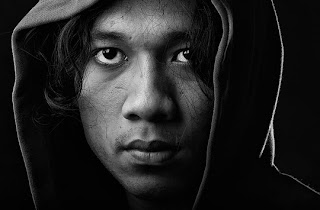Thursday, March 22, 2012
Monday, March 19, 2012
Camera Lucida
Alexander Gardner – Portrait of Lewis Payne
Camera Lucida: Reflections on Photographyby Roland Barthes
I will start by saying I did not like this book when I started reading it. Roland Barthes did not seam to have a clear direction on what he was saying and did not have seem to have a good reason to be writing about this topic. But as I continued reading it became clear that Roland was writing in order to solve his own intellectual dilemma of why he was attracted to some photographs and not others, and not a 'how to see photographs.' Once I established this for myself I quite enjoyed the book.
Camera Lucida gives a rare look at photography from the view point of the viewer (none artist, none critic ,none photographer). Barthes does not describe how a photographers should take a photograph but simply explores what he himself is drawn to or repealed by in a photograph. Barthes breaks the photograph in to parts. The operator is the photographer, the spectator is himself, the studium is general information that a photograph expresses, and the punctum; the thing that makes the spectator feel something (being punctured).
The author explains that every photograph has the first three elements but the photographs that have punctum are the ones that become something more. now I will say that Barthes punctums and mine differ in many areas but that would be true with the punctums nature. In other words the punctum is what my life full of experience and relations tells me what to relate to in this photograph.
some quotes that I fell i should take from this book
"society, it seems, mistrusts pure meaning: It wants meaning, but at the same time wants this meaning to be surrounded by a noise... hence the photograph whose meaning ( im not saying its effect, but its meaning) is too impressive is quickly deflected."
" the voice of banality ( to say what everyone sees and knows) and the voice of the singularity ( to replenish such banality with the elan of an emotion which belonged only to me) it was as if I were seeking the nature of a verb which had no infinitive, only tense and mode."
"All those young photographers who are at work in the world, determined upon the capture of actuality, do not know that they are agents of death."
-Roland Barthes
Wednesday, March 7, 2012
lighting
3 Point Lighting
Three Point Lighting uses three different light positions: a key light, a fill light, and a back light. This style of lighting can be used to lit the subject however desired. The photographer has control over the shadows and shading produced by direct light. The key light is the primary light in this set up, it shines directly on the subject. The positioning, strength, angle, and color of this light determines the overall lighting design of the shot. The fill light is placed at an angle relative to the key light. It is usually positioned lower and the object of this light is to illuminate the shaded surfaces. This light is usually softer and less bright. The final light, the back light, shines on the subject from behind. It gives a rim light to the subject, providing highlights to the contour and separating the subject from the background.
 |
| Birds Eye View of 3 Point Lighting |
 |
| Example of 3 Point Lighting Portrait http://www.photographyreal.com/7-stunning-examples-of-portrait-photography/ |
Rembrandt Lighting
Rembrandt lighting uses one main light and a reflector, or a key light and a fill light. In this lighting style, one side of the face is well lit from the main light while the other side focuses on the interaction of shadows and light - chiaroscuro - to create a geometric form on the face. This geometric form, usually a triangle or diamond, is located under the eye and is no longer than the nose and no wider than the eye. This shape is the key to Rembrandt lighting. This illuminated triangle is found on the less illuminated side of the face. Set up for this style includes a key light and a fill. The key light is placed in front of the subject, high, and to the side. The fill light is positioned at half height and on the other side of the subject. It is about half of the power of the key light. This style of lighting is appealing because the final image created is natural and compelling, also this style of lighting required minimum equipment. It is named for the Dutch painter Rembrandt, who used this style of lighting.
 |
| Bird's Eye View of Rembrandt Lighting |
 |
| Rembrandt - Self Portrait |
Subscribe to:
Comments (Atom)






















